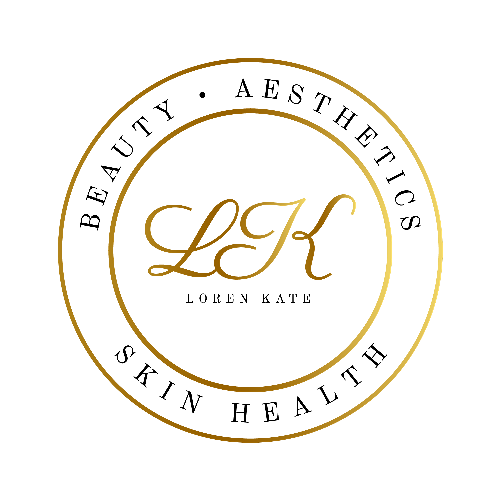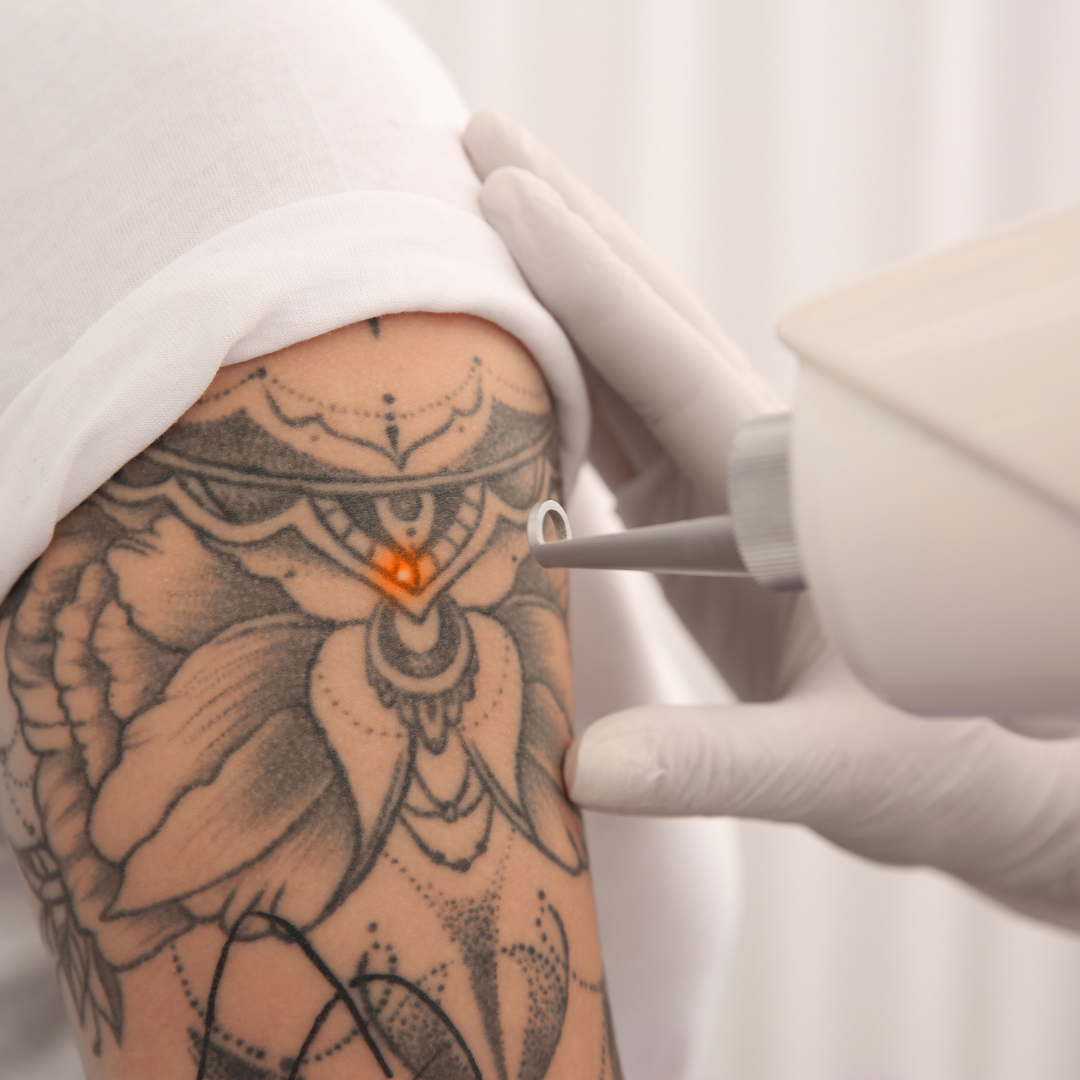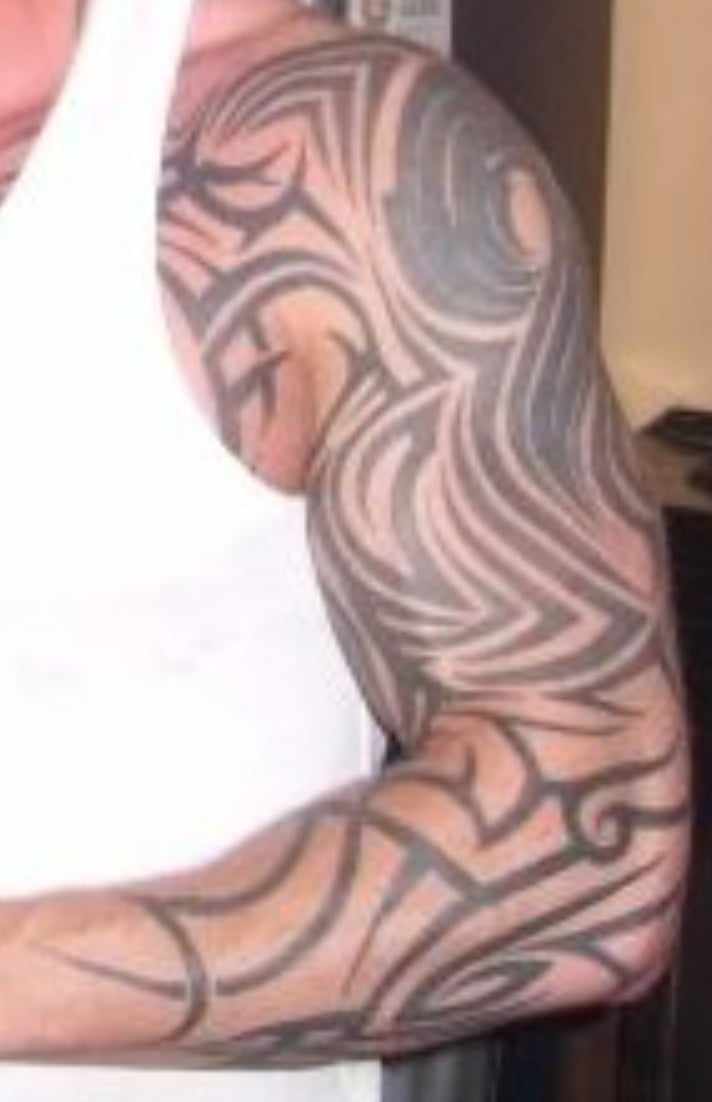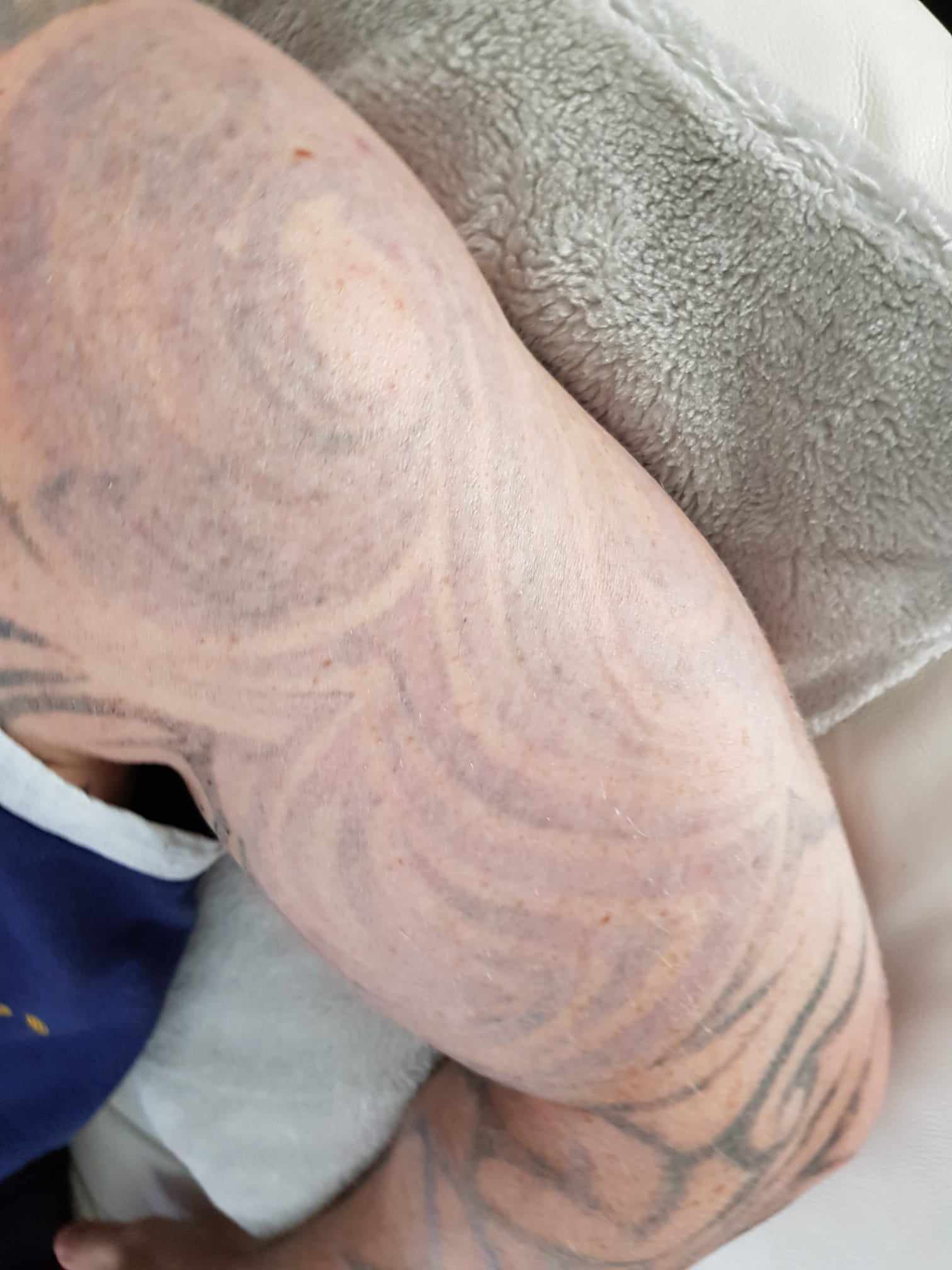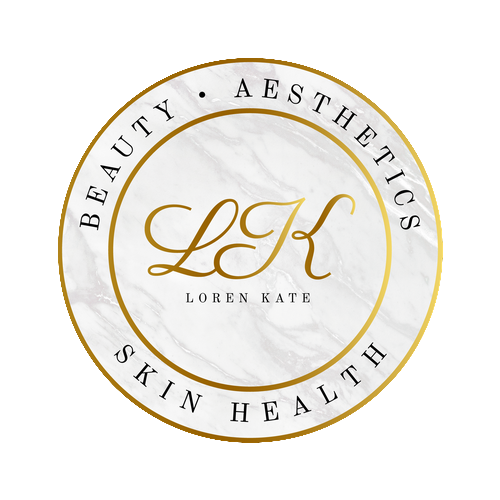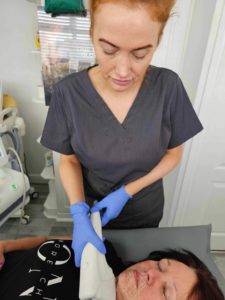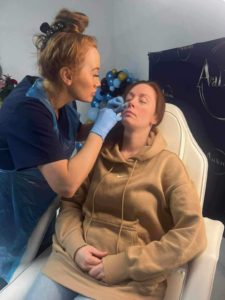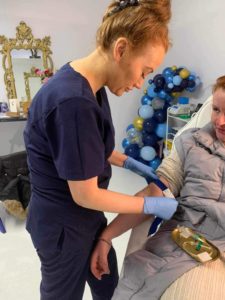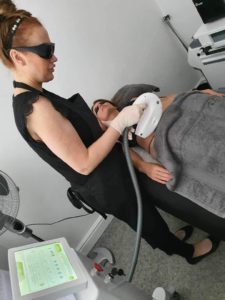The laser emits a pulse of light that is preferentially absorbed into certain colours of ink. The light enters the skin at a speed that is too fast to heat the tissues (billionths of a second), instead, it produces a shock wave effect and breaks up the ink particles into smaller pieces, the body then recognises these particles as something that shouldn’t be there and attacks it. The particles are then removed naturally via the body’s own elimination system.
Have you ever seen an old tattoo that is partially faded? Tattoos naturally fade over time because the body’s immune system recognizes that tattoo ink is a foreign substance and tries to remove ink particles.
We can treat black, blue, red, and green ink tattoos using the Q-Switch System. Unlike salon machines which can only reduce tattoos, our medical laser is powerful enough to fully remove them.
With all tattoo removal we have the added benefit of using the Cryo 6 cold air machine for skin numbing & patient comfort. The Cryo directs freezing cold air (-30°C) deep into the skin where the ink is located, mitigating any discomfort or pain associated with the laser. Unlike other cooling methods, the Cryo 6 can cool the epidermis before, during, and after laser treatment, making it the only cooling method that can be used during a laser procedure, for fast, prolonged numbing of the treatment area.
By simply blowing this cold air on the skin for a few minutes, the skin will be thoroughly cooled for the treatment – reducing pain and risk of thermal injuries.
